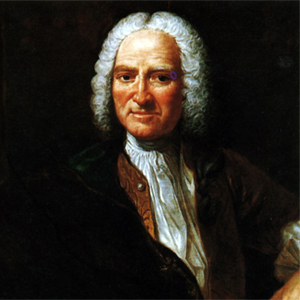
Your complimentary articles
You’ve read one of your four complimentary articles for this month.
You can read four articles free per month. To have complete access to the thousands of philosophy articles on this site, please
Television
WandaVision
Jason Friend searches the infosphere for the identity algorithm [CONTAINS PLOT SPOILERS].
Amidst the vast sea of superhero-themed popular culture, the 2021 television series WandaVision (Disney+) stands out not for spectacular action scenes, but for its emphasis on the psychological stakes of being superhuman. The show’s protagonist, Wanda Maximoff, a.k.a. the Scarlet Witch, one of the most powerful member of Marvel’s preeminent superteam the Avengers, has suffered a string of terrible losses. Her parents, her brother Quicksilver, and her romantic partner, the android known as the Vision, have all been victims of the violence that pervades the Marvel Cinematic Universe. In a madness brought on by grief, Wanda uses her mystical abilities to forge a refuge for herself, transforming a New Jersey suburb into a utopian dream-world based on the sitcoms of her youth, and creating a replica of her beloved Vision to play the role of loving husband in her fantasy world.
In the final episode of the series, two very different versions of the Vision battle one another. But as the show makes quite clear, the true fight is not physical, but philosophical: Which of the two entities is the real Vision? Is it the simulation of the Vision created by Wanda – a being who seems to have the personality of the original Vision and at least some of his memories – or is it the ‘evil’ Vision – a being who possesses the android’s original body, but whose memories (and paint job) have been wiped clean, and whose personality has been reprogrammed by nefarious government forces? At the culmination of the battle, Wanda’s simulated Vision even steps into the role of philosophy teacher, as he explains the famous Ship of Theseus thought experiment. Consider a ship which, over the course of many years, has had every single part replaced – should it still be considered to be the original ship? However, unlike Theseus’ hypothetical ship, each of the two Visions retain different pieces of the original. But there’s one important thing that both of them lack which the original Vision had – the Mind Stone, the mystical Infinity Stone which, in the film Avengers: Age of Ultron (2015), seemed to be the key ingredient that first transformed a lifeless machine into a person: the touchstone that turns Pinocchio into a real boy. Thus, encoded into the very essence of Vision’s story is the classic dualist idea that selfhood is some sort of additional entity, which can never be equated with a mere program in a brain.
But what if the self is, in fact, a program?

Wanda’s sitcom vision of happiness
WandaVision Images © Disney+/Marvel Studios 2021
In Search of the Lost Self
This is not the answer to the question of identity most commonly found in the philosophical literature. Here the soul, the body, the brain, memory, psychological continuity, and consciousness, all vie as contenders for the keystone of the self. However, as philosophers in opposing camps are quick to point out, there are serious problems with all of these traditional answers. The soul is an overly vague spiritual idea with no empirical grounding. Memory is fickle: it can be lost, flawed, or completely delusional – so an unstable thing to build a self from. A body with no brain is a useless husk rather than a key marker of personal identity. The brain seems to me a much more promising bearer of personal identity, since it contains or underpins most of the facets we associate with identity: our thoughts, our personality, our memories, and our consciousness. But as many philosophers have also pointed out, the brain itself seems like just another vessel: if its relevant contents could be transferred to some sort of supercomputer that could function like a brain, wouldn’t the self follow it there? So if Wanda has successfully transferred all of Vision’s memories, personality, and thinking-capacity into her simulated version, isn’t the simulation then the real Vision?
The camp which argues for psychological continuity as the basis of continuing personal identity is the hardest to refute. This is the idea that I am the same person who experienced what I remember experiencing. The best attempts at refuting this idea come from the most radical philosophical position on identity, held by philosophers who argue that there is no self at all. When David Hume for example turned his gaze inward in search of his self, he found no stable footing to ground such an entity; instead, he noted a constant stream of ever-changing perceptions and thoughts based on those perceptions, with no singular ‘I’ clearly in charge. Derek Parfit, who later took up Hume’s no-self position, added that even our consciousness, which we tend to think of as an indivisible stream, is capable of being divided into different entities. He cites the cases of split-brain patients and invents various ingenious thought experiments to support his claim. But what of our personality traits – those trademark steady characteristics which most of us would quickly list off if we were asked to describe ourselves? The No-Selfers respond by pointing out that these too shift over time, and that if we increase the time horizon widely enough this becomes self-evident. The personality of Wanda as a seven-year old girl is likely to be very different from that of the seventy-year old Scarlet Witch. From the perspective of the No-Selfers, we are all like the Ship of Theseus; our identity is constantly in flux, and there is nothing that anchors it besides the name that we use to label it.
However, although the assertions of the No-Selfers may look persuasive at first glance, I think that their arguments ultimately miss the mark. We do have real selves, and if like Hume we cannot see them when we introspect, this might simply mean that the self is not visible from that vantage point. You could, after all, disassemble the Vision piece by piece without ever seeing his source code. So how then do we glimpse what constitutes our true self?
The Source of the Code
One of the best answers I have seen to this question comes from a philosopher who was not tackling the question of personal identity head on, but was instead examining one of the other bedeviling questions of metaphysics – the question of free will.

Baron d’Holbach
Paul-Henri Thiry, Baron d’Holbach (1723-1789), was one of the first modern intellectuals to argue that not only is the world godless, but that humans have not an ounce of free will. In making this claim, he was also one the first thinkers to compare humans to machines, and in The System of Nature, he proclaims that if the human machine were less complicated, a person “would perceive that all of his actions were necessary, because he would be enabled to recur to the cause that made him act.” In other words, we believe we have free will because our machinery is so complex that we do not understand all of the causes that join together to produce a particular thought or action.
It is here in the writings of Baron d’Holbach that we see the first sketch of the idea of the self as a program: an identity algorithm by which specific new input is transformed into specific new output. But what is the algorithm made of? This is one of Holbach’s key insights, for he notes that the causes that produce our reactions are both biological, such as the survival instinct, and cultural, such as education. Holbach understood that it is almost always both nature and nurture that produce a given mental phenomenon. Our mental algorithm is coded from an inseparable intertwining of biology and socialization.
Of course, by today’s standards, Holbach, writing in the eighteenth century, had only a rudimentary notion of the personality code. I would now say that the root of our identity code is our unique genetic inheritance. Why does a newborn baby react the way it does when presented with a novel stimulus? At that point the answer is purely genetic. New baby Wanda and her twin brother baby Quicksilver are swaddled in their bassinet when a gust of wind brushes their cheeks: baby Wanda’s eyes widen, while baby Quicksilver begins to cry. Why do they have such different reactions to the same stimulus? Because the twins have different genetic and epigenetic codes, and, at the earliest stage, each of their selves is made entirely from this genetic code.
Years pass, and five-year-old Wanda and five-year-old Quicksilver are taken by their parents to the local ice cream parlor, and asked to choose a flavor they’ve never tasted before. Why does Wanda gleefully choose a scoop of Scarlet Fury while Quicksilver devours a scoop of Lightning Flash?
Although these decisions seem elementary, they are far more complex than they first appear. With each new experience, a line of code from the nurture (or ‘experience’) side is added to the algorithms of baby Wanda or baby Quicksilver. By the time they’re five, their decision-making algorithms are already a dense web of genetics, teaching, and other experiences. It is no exaggeration to say that their ice cream choices may be the result of a thousand different factors, the interplay of years of mental coding.
Many people may understandably be upset at this depiction of the self as a decision-making algorithm. But our deep desire to believe in free will obstructs us from understanding our identity as it truly is. We want to believe that Wanda and Quicksilver could have chosen any flavor when they entered that ice cream store; but as Holbach and other philosophers have argued for centuries, this is not the case. Viewing the vast array of ice cream choices before them was a new stimulus, which was then input into their different decision-making algorithms, necessarily producing a specific different output in terms of their choices.
Others may agree that there is no free will, but disagree with the equating of selfhood with a decision-making algorithm. After all, who cares what ice cream flavor Wanda chose on a random afternoon when she was five? Why would this or any other choice be significant to her identity?
What’s important to understand here is that the decision-making algorithm is responsible for every thought we’ve ever had and every action we ever take. It is what leads Wanda to fall in love with Vision in the first place. It is what causes her to cope with her many traumas by creating WandaVision. Everything that we really care about that we associate with our selves – our thoughts, feelings, personality traits, decisions, and actions – results from our identity algorithm.
While many may shudder at such a thought, and perhaps find it depressing, I think it is anything but. We all yearn to be special snowflakes, never realizing that we already are. It is precisely because no two people share the exact same genetic code or the same experiences that no two people share the same identity algorithm. So each self is unique. The identity algorithm is quite a beautiful idea when properly understood.

Continuity of What?
So, how does the identity algorithm idea stand against criticisms from the No-Self philosophers?
The algorithm model clearly rejects the assertion that there is nothing constant about the self. The genetic aspect of the code is there from birth to death. Some might even be tempted to dub the genetic portion ‘the true self’, since it is an unchanging code which all the later code builds on through the teachings we receive and the experiences we have. However, I think this would be a significant misunderstanding of the identity algorithm. The effects of socialization are every bit as important to our selves as our genetic inheritance, and every bit as influential to the outputs of our decision-making algorithm. While seven year old Wanda might still find Scarlet Fury ice cream to be delicious, seventy year old Wanda might find it absolutely repulsive, even though the genetic part of her code has not changed a bit in the intervening years. So while the No-Selfers might argue that the change in Wanda’s taste shows an absence of continuing identity, I contend that it simply reveals the evolution of the algorithm. There is still a singular thing, an ‘I’, in charge of every decision that we make – the algorithm – but due to our experiences new code is being added to it at every moment, and over time this shifts the decisions the algorithm makes. Just as the algorithms that social media sites so effectively deploy on their users grow and learn with every new data point, so do the algorithms that defines each of us. Our identity is both constant and changing.
While the differences between the identity algorithm and the No-Self positions are vast, the distinction between the identity algorithm idea and psychological continuity is much more subtle.
Here we must turn back to Wanda’s simulation of Vision. Throughout the early episodes of WandaVision, it is quite clear that the simulation believes himself to be the Vision, and with his memories of Vision’s past life he does appear to be psychologically continuous with the original. However, he may in fact be but a shadow of the Vision; Wanda’s best interpretation of the Vision in her desperate attempt to recreate him. The psychological continuity camp does not seem able to offer a clear answer to the question of whether the simulation is the Vision or merely a shadow, since it takes psychological continuity to be primarily a subjective experience, such that if you experience yourself as having it, you have it. However, from the perspective of the identity algorithm, there is a clear and objective answer to the question: if the simulated Vision contains the exact same code as the original Vision did at the moment of his demise (including encoding all his experiences and so incorporating the impacts of those experiences on the evolution of his algorithm), then he would indeed be the Vision, since he would subsequently have all the same thoughts and make all the same choices as the original Vision would. But if his algorithm differs in any way, then he is not the Vision, since his thoughts and decisions would inevitably vary from those of the original.
While the show does not provide a definitive answer to this question, it is notable that Wanda’s simulated Vision seems to eventually give up the idea that he is the original. Instead, he decides to aid the reprogrammed Vision, seemingly by unlocking his blocked memories and returning him to his original code. By the end of the final episode of WandaVision, the simulated Vision has been erased; and the restored one flies away, leaving the viewer to wonder whether he has returned to his former identity. Doubt remains, for this restored Vision still does not possess the Mind Stone, which might be thought to contain his soul. But perhaps the wise philosophers at Disney+ have come to realize that the Vision does not need a soul to have a self: that if an identity algorithm is good enough for humans, it’s good enough for an android. It turns out that Pinocchio was a real boy all along.
© Jason Friend 2022
Jason Friend has an MA in English from Stanford University. He teaches literature and philosophy in California.









